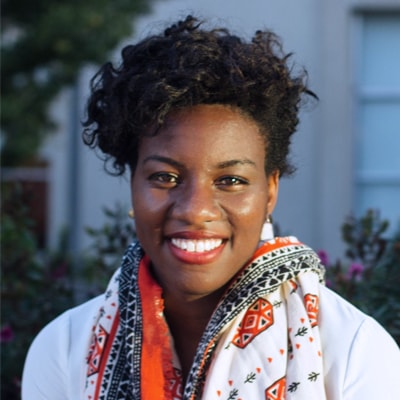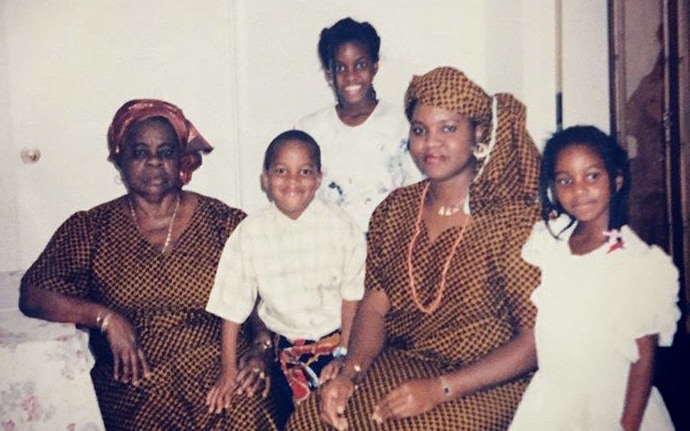Nony Onyeador, a McKinsey engagement manager, comes from an extended Nigerian family and grew up in Los Angeles. She earned an MBA from UC Berkeley after studying urban studies and creative writing at the University of Pennsylvania. She’s had a special interest in coming-of-age stories ever since. “I like to write about the relationships and experiences that make us who we are,” she says, “the friends and family who get us from point A to B, and help us navigate the turning points in life.”

Nony is also hoping that her most recent consulting work, a research project on the Black experience in Hollywood, proves to be a turning point of sorts. She and a small team developed an extensive fact base by analyzing industry data sets and reports; conducting focus groups and more than 50 one-on-one interviews; and mapping the journeys of Black professionals in the industry. The work captured the Black experience of working in Hollywood, both on screen and off-screen, from project conception through the creation, production, distribution, and promotion of shows and films. They then identified potential solutions and detailed a road map of actions for developing greater diversity across TV and film.
“Entertainment is one of the most complex and powerful industries in our society because it is visible to everyone,” Nony observes. “It creates our narrative and can only be made richer by providing access to all voices. It’s very exciting to have these findings and hopefully use them to help create change.” Here are excerpts from a recent conversation with Nony.
Let’s start on a personal note: what is your favorite TV show or movie that you've watched during quarantine?
Without a doubt, “I May Destroy You.” I wish I wrote it myself. It's very high-quality writing and directing, and it shows Michaela Coel’s incredible range.
As a writer, how did you get into consulting?

I always thought of myself as a writer with a business bug. Consulting is a lot like writing a mystery or figuring out a puzzle: you have to solve a problem. I went to business school but always wanted to find my way to the creative side of business—entertainment. This project brought together the two interests.
How did McKinsey get involved in this project?
The entertainment industry has been changing very rapidly, so there's room for consultants to help Hollywood businesses grow, incorporate data into those processes, and attract and retain viewers and talent. For this project, a McKinsey alum, Franklin Leonard, founder of The Black List, has been deeply involved in conversations about race and representation in Hollywood. He is part of the BlackLight Collective, a coalition of Black leaders, artists, and executives who work in varied capacities across the film and TV industry. They focus on what Hollywood could do to become more racially inclusive as both a workplace and in providing economic opportunities.
There had been some progress, but the collective was convinced that their argument would be best made if it was supported by a highly analytical framework provided by a third party.
At the same time, Franklin had seen our firm's commitment to combating racism through our 10 actions and reached out. Our first step was to create a structured, factual baseline about where the industry is today and then map a potential path forward.
This work wasn’t far off for me in the consulting context. Prior to this, I served a major studio, advising a on a variety of topics, including how to navigate the complexities of marketing a Black-led film. It’s a topic I care deeply about.
The research highlights how different Hollywood and entertainment is from other industries.
That's right. The industry was started with a few, powerful, mostly white men, who created companies that are tightly interconnected; they tended to hire people they knew, who also mostly happened to be white. Our research finds that hasn’t changed much.
A majority of work takes place in small, informal settings on location, without the accountability of structures such as a consistent culture or an HR presence. People work on a contractual, temporary basis.
Every project is very expensive so there is a perception of high risk in doing something different, such as hiring a more diverse crew or talent. The structures and focus that other industries can bring to diversifying their workforces are much more elusive in Hollywood.

Black representation in Film and TV: The challenges and impact of increasing diversity
Can you share a bit about the findings?
We mapped out the entire content development process and talked to people who were writers, agents, showrunners, directors, producers, actors, investors. The bottom line is that Black people and their stories are stifled and under-valued at every point of the ecosystem.
What has to happen to create change?
Overall, there’s an opportunity for the industry to increase the number of Black participants across all levels of the industry including leadership. This includes attracting the next generation as well as creating an environment that encourages Black professionals to remain part of the business today. It also means increasing participation in the economics of entertainment, including salaries, production budgets, and project investments.
To do this, the entire industry must lock hands on this goal and the subsequent solutions. Unlike other industries, the complexity and interconnectivity in Hollywood means that any one company or individual acting alone is insufficient to drive sustainable progress.
Secondly, it is important to define and track the metrics of success so that companies are held to consistent standards for how they hire and promote, and so that they have a target to drive toward.
A bit more ambiguous is the need to broaden the scope of the Black stories that are told: does this mean having a Black lead actor? Having more Black people behind the scenes? Is it stories about the Black experience that are different from what is out there now? Can we rethink the types of stories that are told and interpret genres in new ways? For example, “Bridgerton” brought in a new racial perspective with Black characters in a period drama.
You talked to a lot of people in the industry. What were those conversations like?
People were really grateful for the chance to speak in an external setting and think through the issue of racial diversity in a structured way. It’s not the way they typically do things. They are often working on a very specific project, and don’t have access to the big picture.
Plus, race is a thorny and sensitive topic, so they were happy to have a chance to share their truths openly. Of the many themes, across the board participants believed that there are no clear criteria or metrics which could define whether they were doing a good job, could be promoted, or move to another position. There’s no consistent definition of what “good” looks like. This is where inequity is often likely to stem from. And our work, we hope, will start to change this.
What did you personally learn from this project?
I have to be true to myself. My passion lies with storytelling, which is about helping people to amplify their voices, whether it's in a film, in the media, or in something like McKinsey consulting.
I learned by working with clients across other industries that the benefit McKinsey brings is about identifying the problem, structuring it logically, and chasing it. But entertainment is all about thinking out of the box in storytelling. Bringing these elements together was the best of the best—and really exciting.